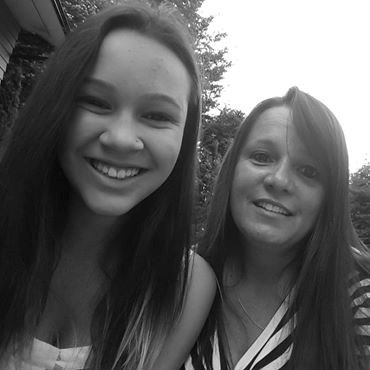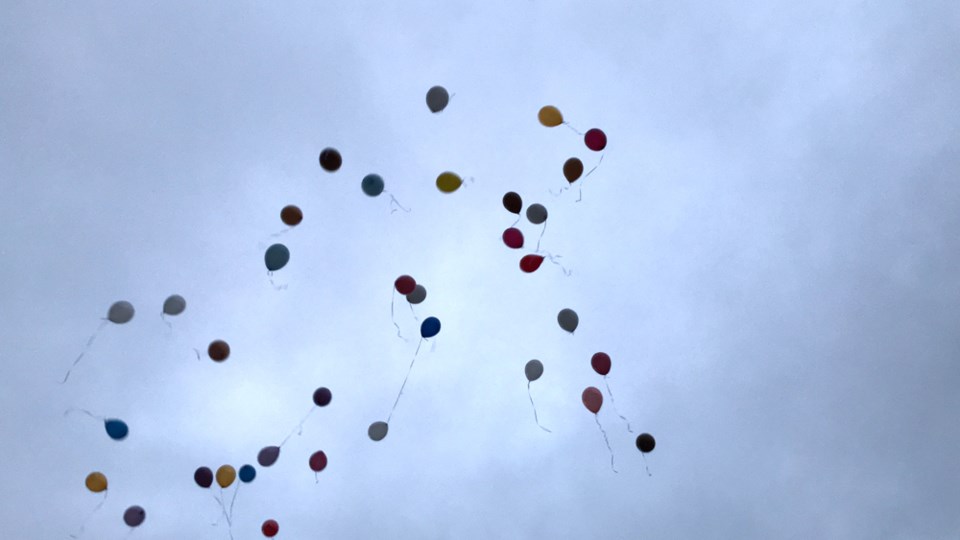Balloons of every colour cuddle up to the ceiling in the Valleycliffe garage. Below the festive rainbow, several family members and friends sit around a portable heater, warming themselves against the November chill. Teens huddle inside and outside the garage, chatting or playing with the two rambunctious family dogs. One of the pooches obliviously has a balloon tied to his collar.
Inside, sweet 16 decorations dot the walls and tables. The birthday girl's favourite foods line the kitchen counters: doughnuts, fruit, and potato chips.
At the appointed time, everyone gathers in the family's yard and lets the balloons — now carrying felt-marker messages to the birthday girl — fly into the air. Sobs break out from some in the crowd who stand and watch, and watch, and watch, as the balloons float away.
As they become dots in the sky, the balloons cluster together and then are gone.
This was the sixteenth birthday party held recently for Steffanie Georgina-Anne Lawrence who died from a fentanyl overdose on Jan. 22, when she was barely 15-years-old.
This is the overdose crisis.
And it continues. Since her death, approximately 1,270 others have died in B.C. from illicit drug overdoses, according to the BC Coroners Service. [Compare that to 2008 when 183 people died this way the entire year.]
It is easy to scroll past the never-ending stories about the opioid crisis until you know a family impacted. Then, it isn't just another story.

In many ways it is easy to tear up thinking about the loss of Steffanie. She was a young, pretty Squamish girl, from a "good" family. She was loved and had so much life ahead of her.
But we should also care about those whose lives weren't so shiny or futures as bright. No one in our community should be disposable.
I have written before about how media has played a role in stigmatizing substance users with words like "addict," and "clean." With pictures of discarded needles, when the story is about people — brothers, sisters, friends, daughters — dying.
At The Chief, we do not use such words and images in stories from our newsroom.
But that doesn't solve the crisis or bring loved ones back.
It is hard for readers to keep seeing and reading and caring about these stories. It is hard for journalists to keep writing them. But we have to. This crisis is unprecedented in our community and our time. One day, future generations will look back at the numbers of dead piling up and ask how this was allowed to go on for so long. I don't have the answers.
That isn't my job. Plenty is being written about those who do have recommendations.
Naloxone Wakes You Up from Hello Cool World on Vimeo.
Answers are coming from advocates and activists and family members of those who have lost loved ones. From moms like Brenda Doherty, who has been begging for secure care since her Steffanie died. Answers come by listening to the group Moms Stop the Harm, and from Garth Mullins and his activist crew.
If there is hope for a way out of this crisis — and we have to believe that there is — these people will show us the way.



